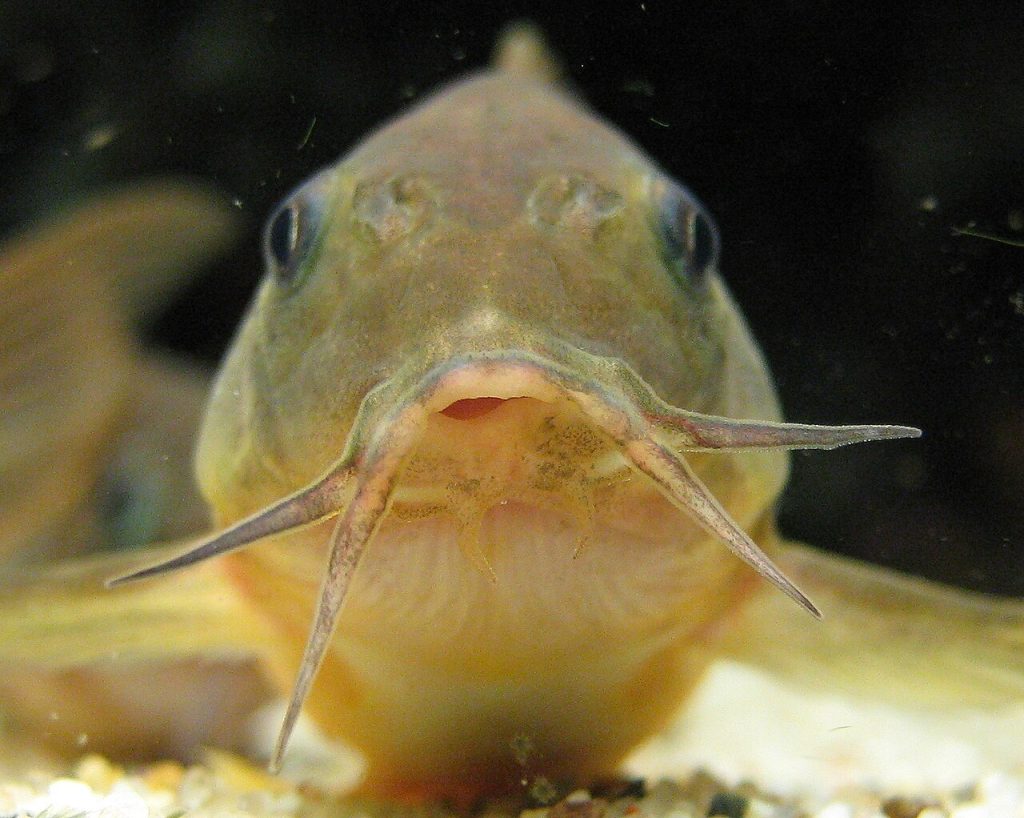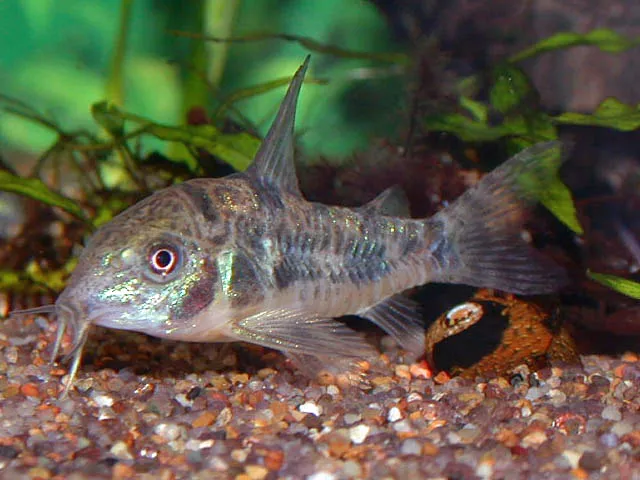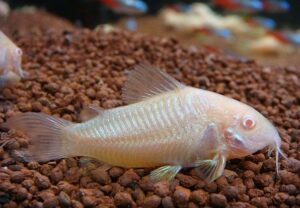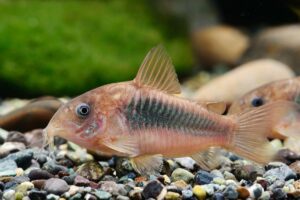Corydoras catfish are found all across South America, from the Andes Mountains to the Atlantic coast. They live in slow-moving, clear, shallow streams with sediment and a sandy riverbed. This natural habitat is partially shaded from light by dense overhead foliage. Plants grow abundantly in the waters. They scavenge food in the riverbed.
| Demographics | |
| Scientific Name | Corydoras paleatus |
| Origins | Amazon River, Rivers in South America |
| Adult Size | 1“ to 4” |
| Lifespan | 3 to 4 years |
| Temperment | Peaceful |
| Diet | Omnivore |
| Breeding | Egglayer |
| Min School Size | 3 |
| IUCN Status | LC |
| Tank Setup Parameters | |
| Temperature | 70°F to 78°F |
| pH | 5.5 – 7.0 |
| Water Hardness | Soft – Medium |
| Tank Zone | Bottom |
| Substrate | Sand or Fine Gravel |
| Heating Required | Yes |
| Lighting Requirement | Low |
| Plant Friendly | Yes |
| Min Tank Size | 10 gallons |

Behaviour
Corydoras spend most of their time at the bottom of the tank and are quite shy during the day. They have adapted to be able to breathe air from the surface, so you may see them dart up to the surface for a gulp of air occasionally. This is typical behaviour for them, but if they are spending a lot of time at or near the surface, it could suggest the oxygen in your water is low. Corydoras are more active at night and can shoal with other fish.
Tank Setup
It’s always best to replicate their natural environment as much as possible. Corydoras thrive in planted aquarium setups, which provide good hiding places and, most importantly, a soft substrate they can easily sift through.
Although they are easy to care for, they can get stressed easily if these basic needs are unmet. They can tolerate a variety of water parameters, but consistency is key. Once they are acclimated to a certain chemistry, changing it drastically will cause a lot of stress.
Corydoras are a favourite species as a “clean-up crew.” They routinely eat leftover food at the bottom of the tank and sift through the sand for other nutrients.
Diet & Feeding
Corydoras eat many insects, worms, and larvae in their natural habitat. For aquarium keepers, good-quality flake food can be considered their staple diet, with occasional additions of frozen blood worms or brine shrimp.
Breeding
Corydoras are not difficult to breed, and if you are new to breeding fish, they are a good choice.
Tank Mates
Corydoras are routinely housed with other community fish. They do well with non-aggressive, peaceful fish like Tetras, Guppies, Mollies, Swordtails, or other Catfish.
Avoid aggressive species that may chase them, like many cichlid species or territorial fish.
Species Variation
There are hundreds of species of Corydora that have been identified, with more every year. It would be impossible to document all of them here, but here are some of the more popular I’ve seen around locally.






